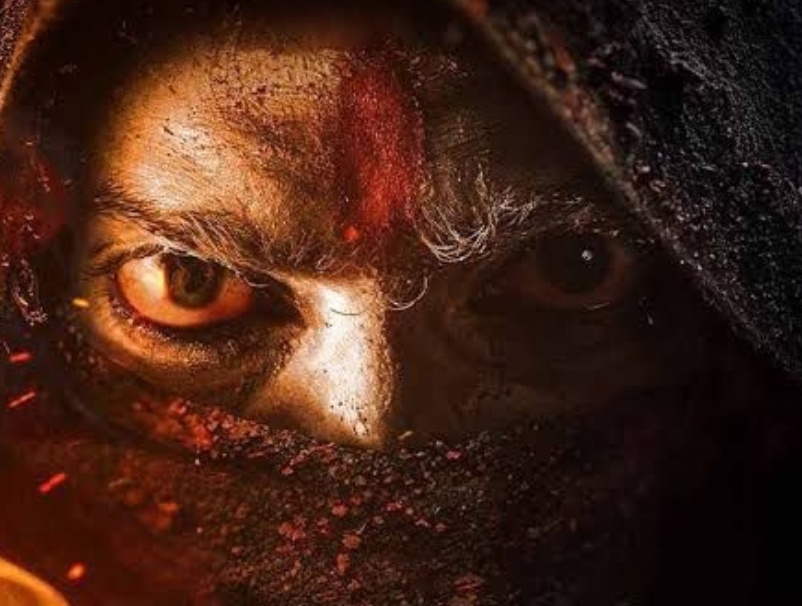Bengali superstar Dev’s latest outing, Raghu Dakat, directed by Dhrubo Banerjee, reaches for the mythic resonance of a Robin Hood legend. It tells the story of a notorious outlaw who protects the peasants from the exploits of the British officers and oppressive zamindars during colonial unrest in Bengal. While the premise has the makings of timeless folklore, the film rarely elevates the well-worn template it inherits,settling down into disappointing and substandard fare.
Set against the fictional town of Rudrapur during the Indigo Revolt in Bengal, Raghu Dakat follows the titular character (Dev) and his band of outlaws as they rise in defiance of colonial oppression. Led by the ringleader Dakat Maa (Roopa Ganguly) and aided by his close ally, Gunja (Sohini Sarkar), Raghu protects helpless villagers from the savagery of British officer Duncan (Alexx O’Nell) and robs the wealth of zamindar Ahindra Barman (Anirban Bhattacharya) to redistribute it among the poor. Ahindra and Duncan, united in their greed, face mounting pressure from Ferguson (Carl A Harte), a higher-ranking official demanding greater indigo production through brutal land acquisitions. With Raghu standing in their way, the two conspire to eliminate him…
A few decades ago, Bengali cinema found easy box-office success by remaking South Indian hits. That phase may have faded, but the habit of imitation hasn’t died. It has simply disguised itself. Raghu Dakat is a case in point. Banerjee lifts the surface gloss of South Indian blockbusters without absorbing the emotional weight that makes them work. What we are left with is extravaganza without conviction, a hollow parade of action set-pieces staged only to glorify its star. Dev, who doubles as producer. But two and a half hours of empty posing is not cinema. It is a product, stretched thin and passed off as hyperbolic entertainment.
Raghu Dakat is set in pre-independent India and aspires to be a historical film. Director Dhrubo Banerjee, who previously handled period detail in Golondaaj (2021), again shows care in costumes and set design. Beyond that, however, the backdrop of indigo farming in Bengal adds little to the narrative. The British officers appear as stock figures of menace while similarly, Ahindra is reduced to the kind of one-dimensional villain that Bengali cinema discarded decades ago. Even his showdown with Raghu fails to ignite, stripped of the dramatic weight it desperately needed. The action sequences fare no better. Yet there are flashes of the film it could have been. One arrives when Raghu protects Saudamini (Idhika Paul) from a group of goons in the market. Another time, he and his bandits stage a robbery during a wedding. These sequences suggest a glimpse of the film it could have been, had Banerjee invested the same care in shaping the screenplay as he did in crafting its period details.
What most undermines our investment in Raghu Dakat is the way events unfold. It has a succession of events that rarely establishes a meaningful setup or payoff. From the outset, we know Raghu will eventually confront and defeat the antagonists. The narrative tension should arise from the obstacles along the way. Instead, the hurdles he faces feel contrived, as if the filmmaker is merely filling time to meet the film’s duration. Raghu’s transformation into an outlaw stems from his father’s murder at the hands of Ahindra Barman. Yet his eventual pursuit of vengeance drags unnaturally, straining credibility for a character otherwise portrayed as fierce and decisive. Even the interval’s explosive scene loses impact as post-interval, Raghu emerges virtually unscathed, reducing the blast to little more than a momentary thrill manufactured for temporary spectacle.
Dev’s piercing eyes and body language convincingly embody the character. Yet, there is little in his performance that feels fresh that depends on slow-motion swagger, a chance to flaunt his chiselled physique for the admiring eyes of the fans, and a romantic song to seal his image. In contrast, Anirban Bhattacharya, as Ahindra, exudes intimidation. Sadly, his makeup and presentation make him feel like a villain lifted from films of a bygone era. Of the three women, Roopa Ganguly commands attention, despite her character lacking the depth that could have marked a significant return to Bengali cinema for her after a long hiatus. Sohini Sarkar displays physical agility and emotional nuance, handling action sequences with grace, yet her portrayal feels familiar. Idhika Paul enjoys the film’s most striking introduction. She is not merely a love interest but participates in the action sequences as well. However, her agency is undone in the climax, where she is tied to a pole for Raghu to come to her rescue, reducing her role to a conventional damsel-in-distress moment.
The cinematography by Soumik Halder, paired with the costume design by Sanchita Bhattacharjee, strives to give the film a glossy, larger-than-life look, capturing the film’s characters with visual flair despite shoddy VFX undermining their efforts. Edited by Md Kalam, the film maintains a rhythm and flow, yet the impact is often weakened by a script that goes off course. The score by Nilayan Chatterjee and Rathijit Bhattacharjee dominates the soundscape, and overpowers the scenes. The song Jhilmil Laage Re stands out as melodious and well-picturized, offering one of the few genuinely enjoyable moments in the film.
There is nothing inherently wrong with making a film that builds up a star’s persona. But when that elevation comes at the expense of a coherent, engaging screenplay, the result is little more than cinematic vanity. Raghu Dakat exemplifies this miscalculation. It is a film solely built to showcase its star and fill cash registers, and little else.
Bengali, Action, Drama, Color


